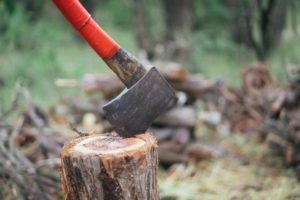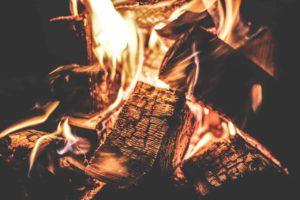While the Brockley Tree Service team will do everything in our power to save your trees, some will simply live out their lives and, eventually, get turned into fuel. You can turn dead trees on your property into firewood, and many businesses across London sell it. But how can you tell what “good” firewood is and when this wood is ready to burn?
The Wood Should Season

One of the biggest differences between “good” firewood and “bad” firewood is in the moisture content. Firewood should dry out for 12-18 months (or more) to get the moisture content below 20%. This is called “seasoning,” and it increases the efficiency of combustion, allowing each log to give off more heat. Burning seasoned wood in a wood stove or campfire will warm the area faster while using fewer cords.
Wood that isn’t given time to dry is called “green” or “wet.” It takes much longer to give off heat because so much energy goes into burning off the excess water in the tissue. Green wood also gives off more smoke and higher amounts of tar and creosote. This is bad for wood-burning stoves and fireplace because, over time, it will build up in your chimney, increasing the chances of dangerous combustion.
The Best Trees For Firewood
You can season and burn any type of wood, but certain trees produce heat much better than others. The less-dense a tree is, the quicker its wood will burn, and you’ll find that using a softwood like a fir or pine will have you refueling more often. Out West, softwoods are common sources of firewood because they are more available. Here in London, however, you’ll find many types of firewood made from hardwood trees. Birch, Cherry, Maple, and Oak burn the hottest, and as such, are the best choices for firewood.
Firewood Has To Be Stored Properly
Whether you cut your own or buy it, any seasoned firewood should be stored under proper conditions. Keep the wood high enough off the ground and shelter it from rain to prevent moisture absorption, keeping the sides of the stack open so air can flow through and continue the drying process.
While it is common practice, try not to stack firewood against a wall. It slows the drying process by stopping airflow. The wood can also be a magnet for insects and fungus, giving mould, termites, carpenter ants, and other unwanted pests a spot from which to move onto your home or building.
Try and keep firewood in a separate shelter that allows air to flow around the entire stack. While you should cover the firewood, stack it in a spot that can ensure exposure to the sun and wind. This will speed up the seasoning process and make sure it’s ready to burn in the Fall time!

